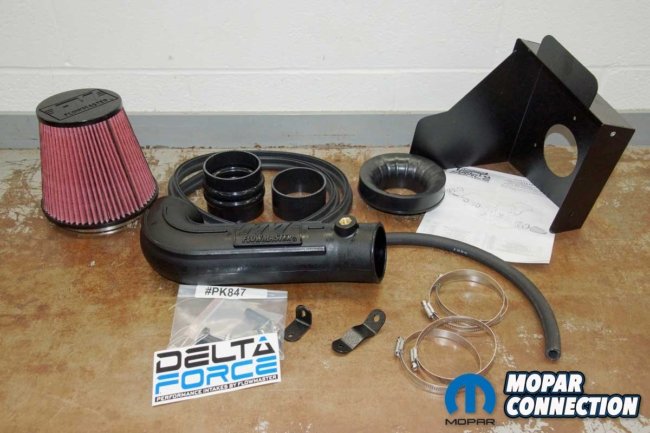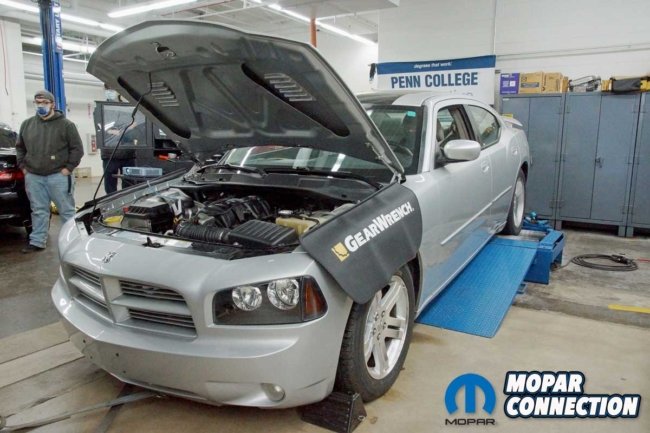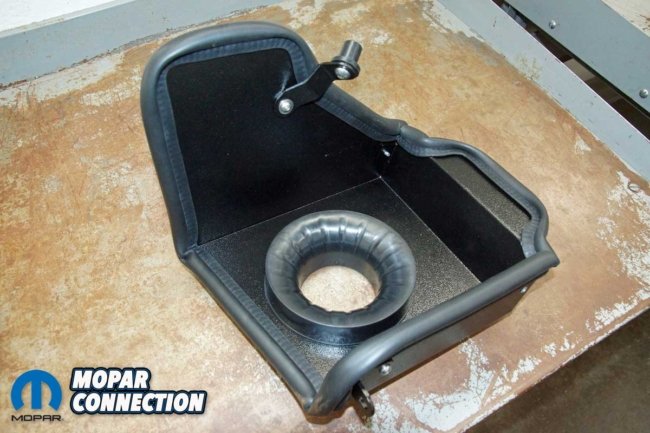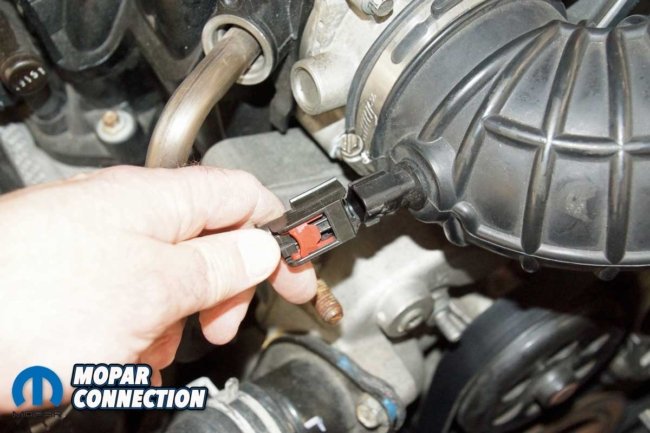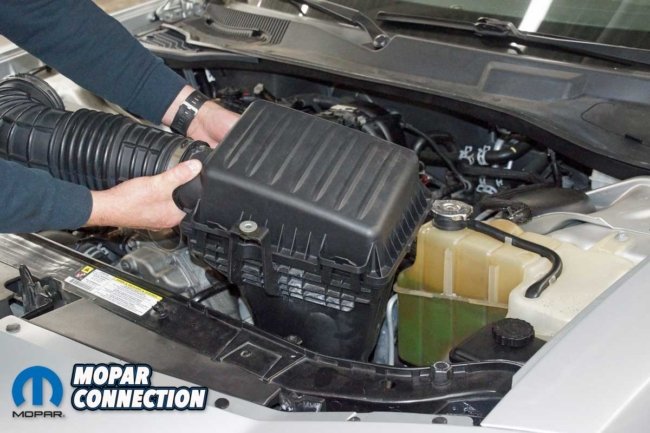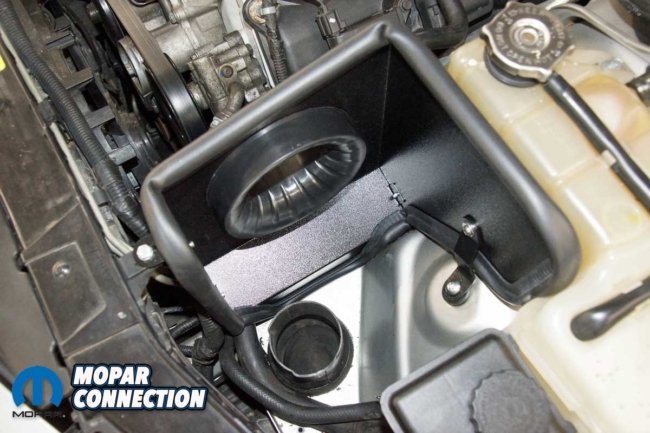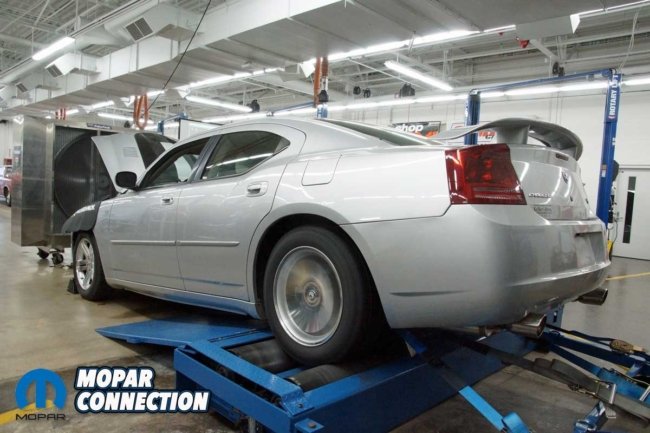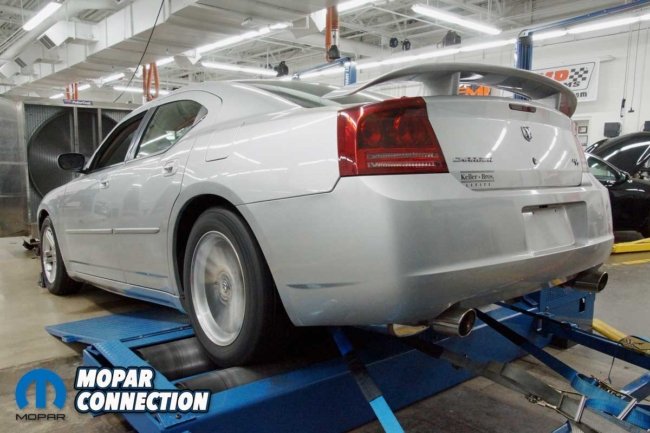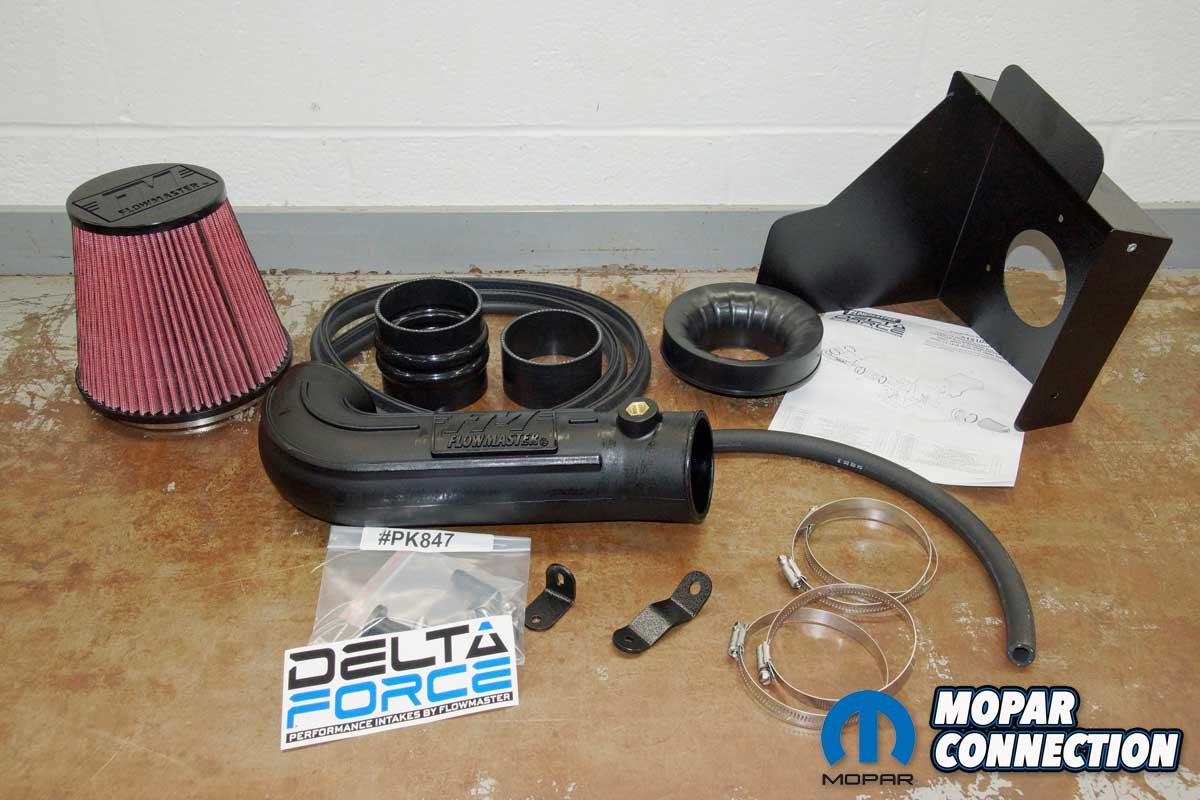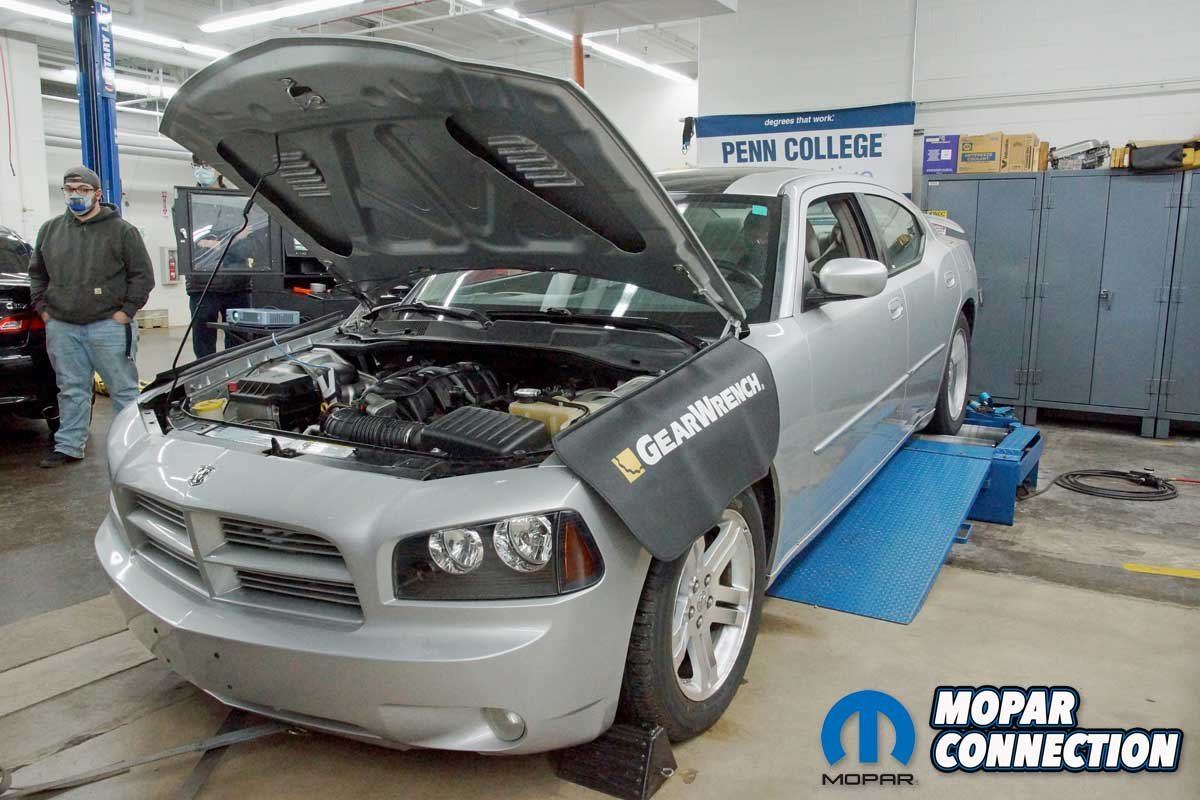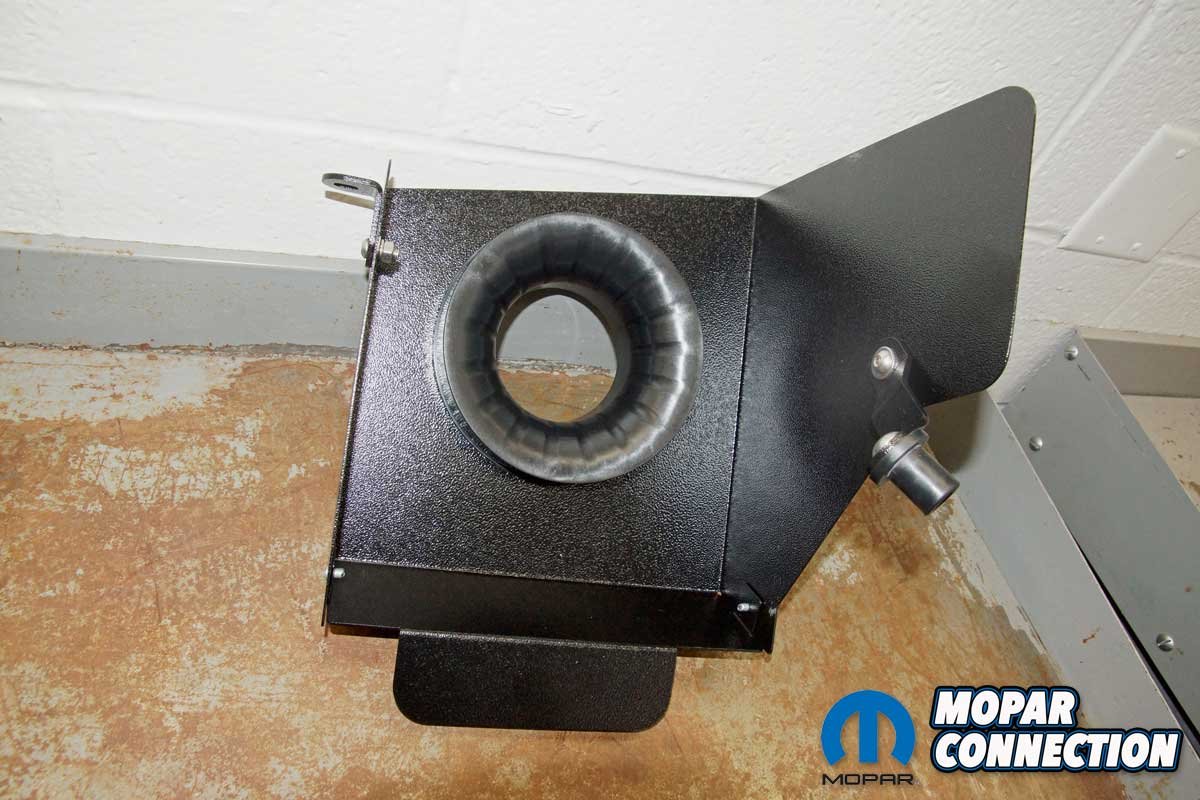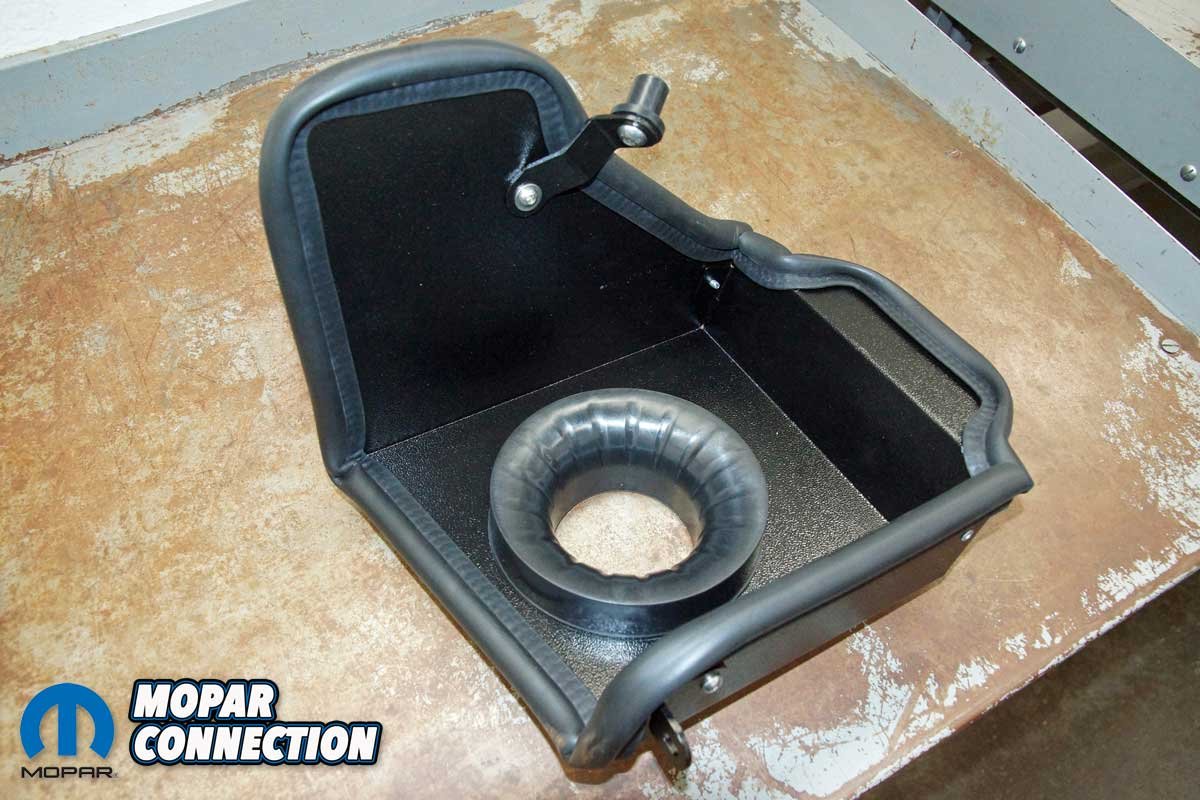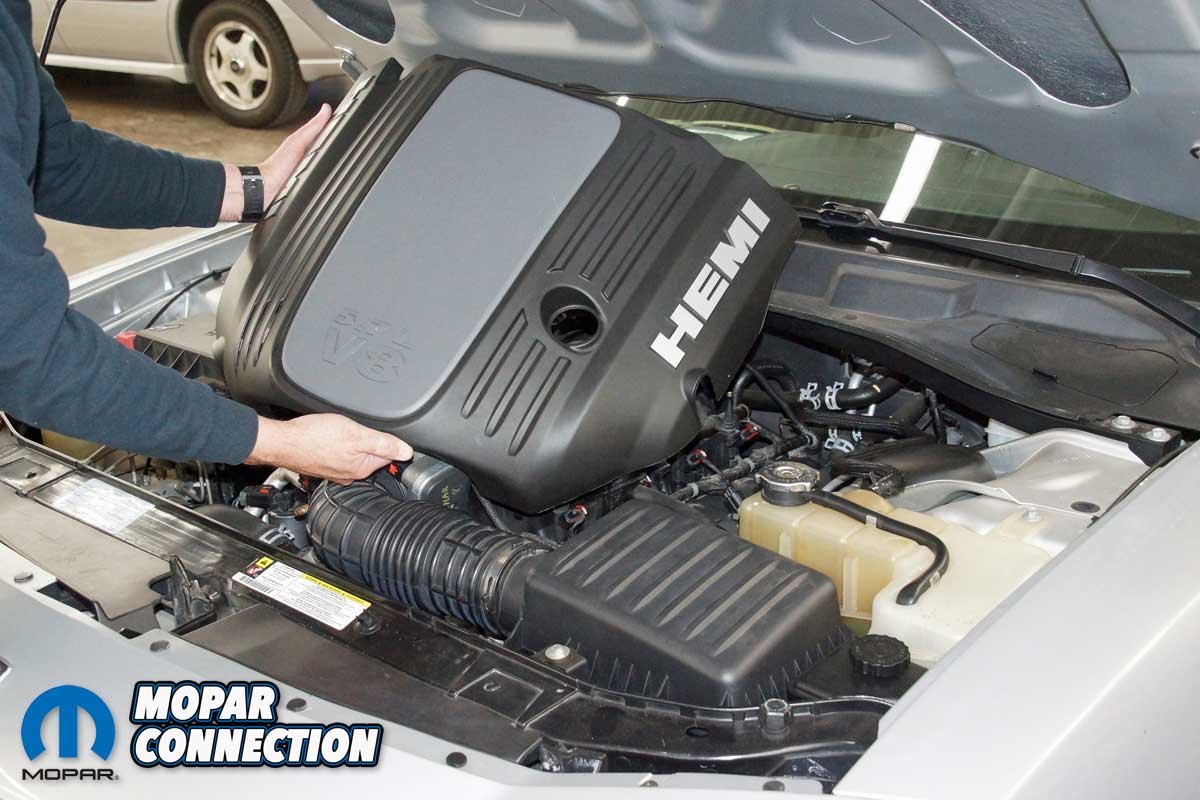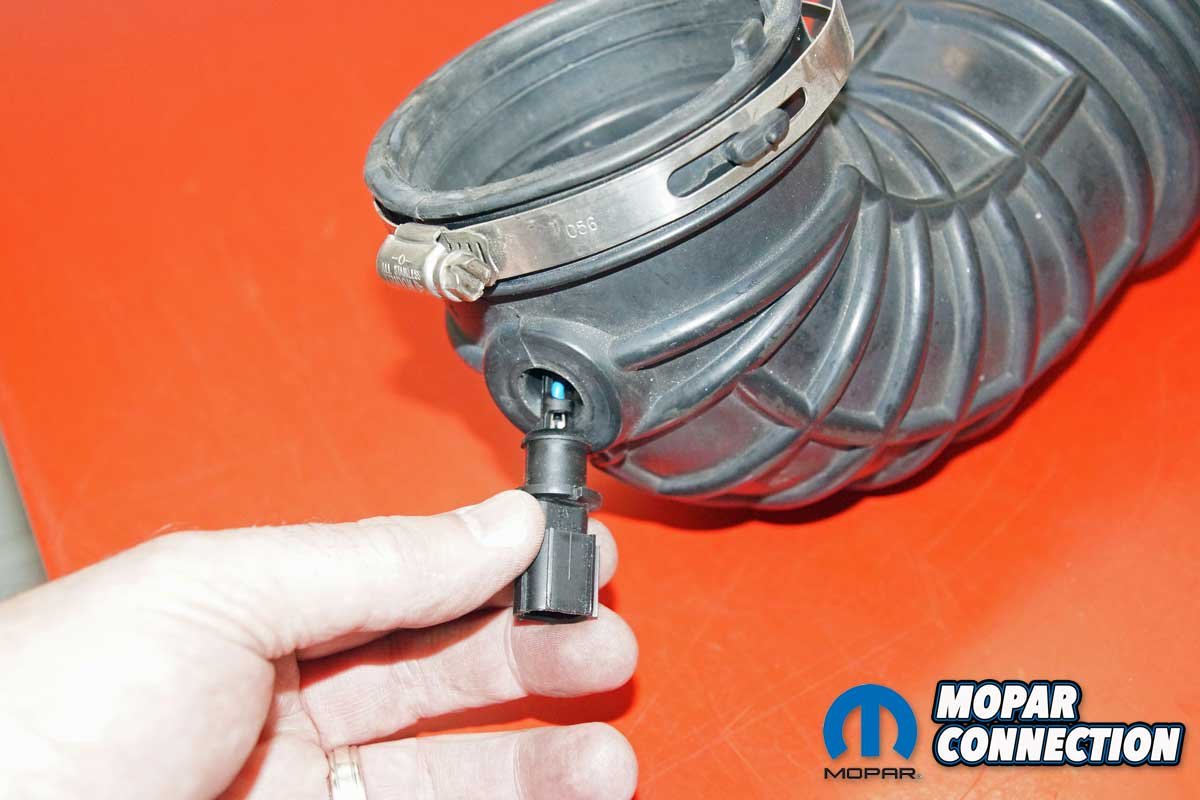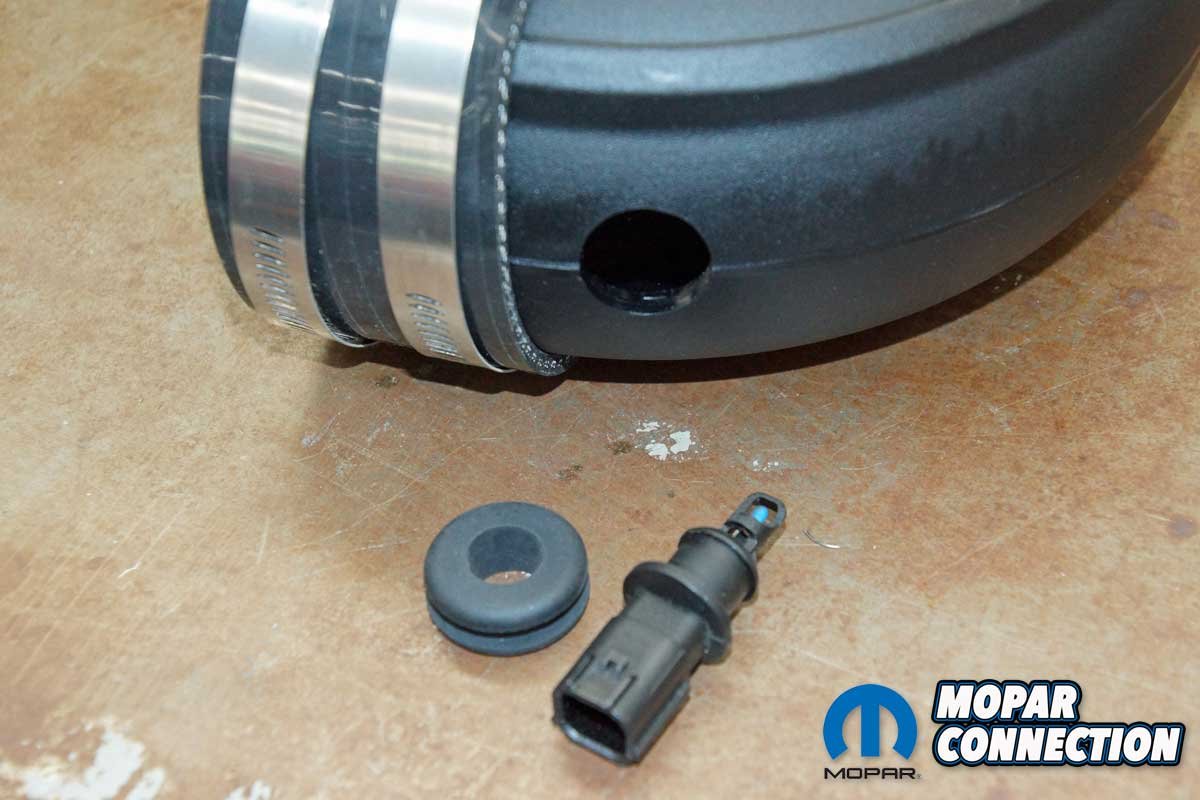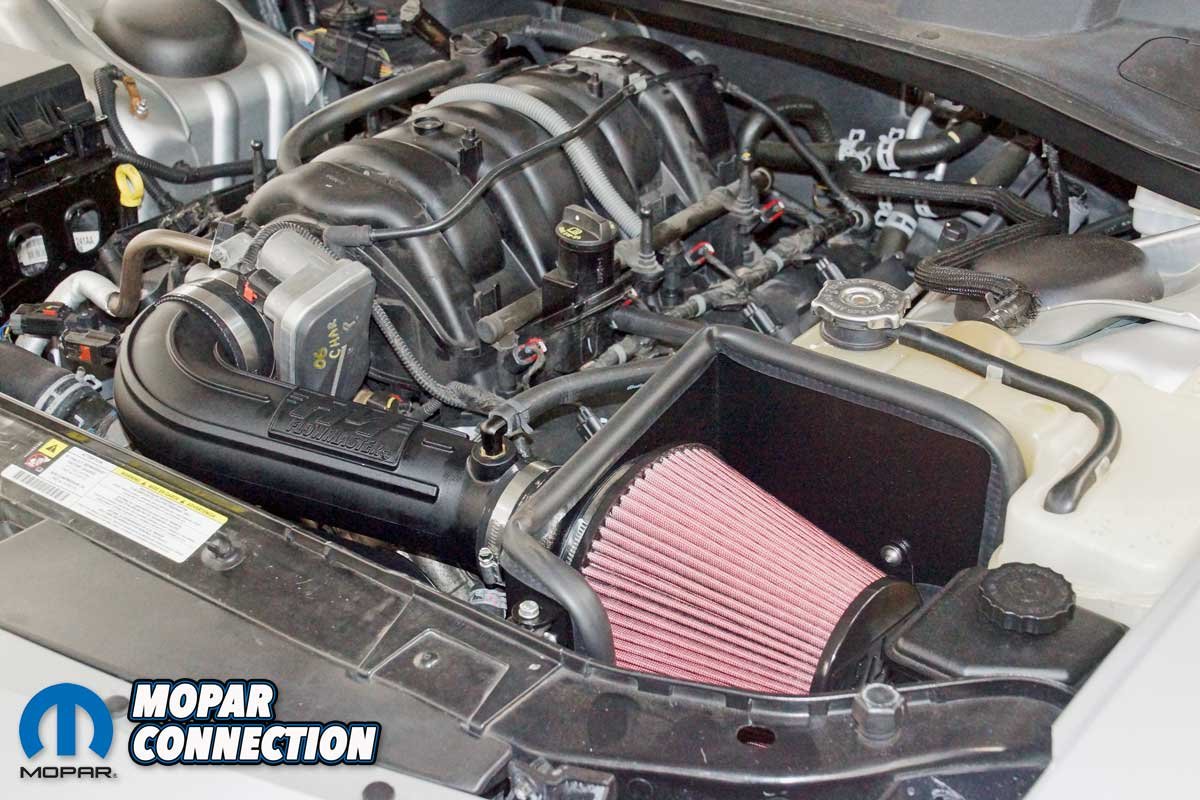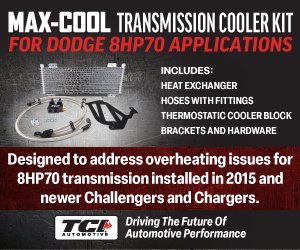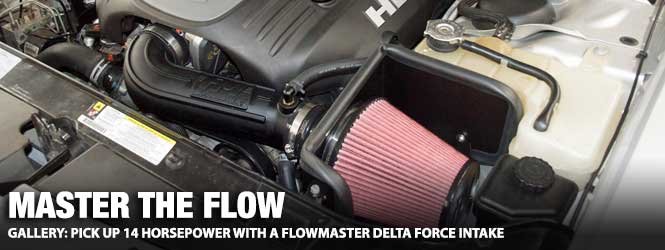
The internal combustion engine is nothing more than an air pump—the more air that gets into it, the more power potential that engine has. The engine can be spun harder (more rpm) to increase the amount of airflow through it, but there are limitations due to the quality of the engine internals. Or the engine can have reduced restriction to the flow of air via ported heads, a better-designed manifold, larger-sized throttle body, or a quality air filter with a slicker intake design. Cylinder heads, manifolds, and throttle bodies can be a bit pricey, and adding any of these parts will undoubtedly require an aftermarket tuner to dial in the maximum performance.
On the other hand, a performance intake would be more budget-friendly, and in most cases, should not require a tuner to achieve increased engine performance. For our 2006 Charger, we found a Flowmaster Delta Force Performance Air Intake that would work with the 2005-2020 5.7L and the 2006-2010 STR8 6.1L Hemis. The Delta Force intake fits any non-Shaker intake system of a Challenger R/T, Charger R/T, Magnum R/T, or 300C. We planned to install the intake and evaluate its performance on a Mustang Chassis dyno.
Top Left: We selected a Flowmaster Delta Force Performance Air Intake (Part No. 615105) for our Charger. The intake fits the 2005-2020 Dodge Challenger R/T, Charger R/T, Magnum R/T, Chrysler 300C with 5.7L Hemi engines & 2006-2010 SRT8 models with 6.1L Hemi engines. Top Right: Pennsylvania College of Technology’s first-year chassis dyno class hosted the test session. The college even provided a 2006 Charger R/T equipped with a 5.7L Hemi. The Hemi had Hedman shorty headers, a MagnaFlow full exhaust, and a 93-octane Diablosport tune. The students set up the Mustang chassis dyno to test the Hemi from 3500-5500 rpm. The Hemi churned out 333 lb-ft of peak torque and 319 peak horsepower (hp) for the baseline. The average torque was 323 lb-ft, with an average of 281 horsepower. Bottom Left: We started with the assembly of the airbox. The mounting hardware was affixed to the box, and with three Allen-head bolts, we located the filter support/air inlet to the airbox. Bottom Right: It took some time and finesse, but we were able to install the push-on vinyl air box trim seal around the airbox housing’s entire parameter.
The Flowmaster kit is a “cold air intake” (CAI) design that comes with: (1) a cross-linked polyethylene high-flow intake tube; (2) a serviceable high-flow eight-layer cotton gauze filter; (3) the airbox and airtight seal; (4) stainless-steel hardware; (5) a hose, clamp, and fitting necessary to complete the installation. The kit also includes a lifetime limited warranty. The Delta Force is designed to be installed without drilling or cutting your vehicle; no tuning is required, and it is easy to install.
The intake is legal under the provisions of the Environmental Protection Agency’s (EPA) document 1A, but it is not legal for sale or use in California. However, California Air Resources Board (CARB) testing for 50-state compliance is pending. Once the testing is completed, an E.O. number will be issued, and the intake will be upgraded to a 50-state legal status.
Top Left: To gain access to the factory airbox and intake, we needed to remove the 5.7L Hemi engine cover. Top Right: The intake air temperature (IAT) sensor connector was unlocked and disconnected from the IAT sensor. The sensor would be reused with the Flowmaster intake. Bottom Left: After removing the hose clamp at the throttle body, one bolt at the airbox, and the crankcase ventilation hose, the intake assembly was removed from the engine bay. Bottom Right: The well-nut, attached to the Flowmaster intake housing, dropped into the Charger’s apron mounting hole, and with the factory bolt, the airbox was secured to the radiator support.
Although we had planned to evaluate the Delta Force intake’s performance on our 2006 Police Package Charger, the weather conditions would not allow access to the vehicle. Luckily, Pennsylvania College of Technology (PCT) (the dyno facility location) had a Charger R/T with similar aftermarket components installed. Just like our Charger, the PCT Charger had full aftermarket exhaust. It was equipped with Hedman shorty headers and a MagnaFlow full exhaust. The cylinder heads had some port work done on them, and the 5.7L was equipped up with a Diablosport 93 octane tune.
When the students arrived in the lab, the Charger was backed onto the dyno rollers. The students tied the Charger down, warmed the engine and drivetrain, and set up the weather parameters for the first of three baseline runs. We decided to run the Hemi from 3500-5500 rpm, equal to about 220 rpm increase per second over the nine-second pull. The three runs had to be within 1% of each other to be considered a valid series of runs. With all the results measured at the rear tires, the best of the baseline runs with the factory inlet and air filter element provided 333 lb-ft of peak torque and 319 peak horsepower (hp). The average torque was 323 lb-ft, with an average of 281 horsepower.
Top Left: We lightly twisted the IAT sensor from the factory inlet hose to ensure we did not damage it. The rest of the factory air intake system would not be reused. Top Right: The Flowmaster intake was shipped with a grommet for the IAT sensor. The grommet was installed into the intake tube, and then the sensor was twisted into the grommet. Bottom Left: A barbed 90° fitting was installed into the inlet tube. The fitting needed to be pointed toward the nipple on the oil filler neck. If it had not been correctly lined up, installing the fitting with a small amount of Teflon tape would help line up the fitting. Bottom Right: With a rubber coupler on each end of the inlet tube, we installed the tube between the airbox and the throttle body. All four hose clamps were aligned and tightened.
With our solid baseline results, we needed to assemble and install the Delta Force intake. The detailed instructions (with photos) listed several steps to construct the intake. We followed the steps, and with hand tools, we were able to complete the assembly. The most challenging part of the assembly was installing the push-on vinyl air box trim seal. After some bending, twisting, and finesse, we were able to wrap the airbox’s entire parameter.
The factory airbox and rubber intake hose had to be removed before the installation of the CAI. We unthreaded one bolt at the radiator support and a hose clamp at the throttle body, detached the intake air temp (IAT) sensor connector, and removed the crankcase ventilation hose from the oil filler neck freeing the intake from the engine bay. The IAT sensor was gently twisted from the factory intake hose, and the rest of the airbox and intake hose was discarded.
Top Left: The IAT connector was clipped onto the sensor, and the red tab was pushed into the lock position. Top Right: The kit came with a new crankcase ventilation hose that connected to the oil filler nipple and the barbed fitting. A hose clamp secured the hose onto the barbed fitting. Bottom Left: The conical filter dropped into the airbox. We slipped it over the lip on the air inlet and tightened it with a hose clamp. Bottom Right: The filter settled nicely just above the factory air inlet ducting. The airbox seal made contact with the underside of the hood. With a positive seal, the amount of engine bay heat entering the airbox was limited.
Following the instructions, we settled the Flowmaster airbox into the factory location. The airbox’s well-nut was maneuvered into the apron’s mounting hole, and the airbox was secured to the radiator support with the factory hardware. The previously removed IAT was installed (with a supplied grommet) into the Delta Force inlet tube. We also threaded the 90° barbed crankcase ventilation hose fitting to the inlet tube’s brass threads.
After installing the IAT and the fitting, we oriented a pair of rubber couplers and four stainless-steel hose clamps on the inlet tube. The tube slipped in place between the airbox and the throttle body. We tightened the clamps, installed the IAT connector, and routed the new crankcase ventilation hose. Lastly, the new conical filter was guided into the airbox and secured. The total installation time took about 10 minutes.
Above Left: With the engine cover installed, the Flowmaster Performance Intake looks excellent. All the parts assembled correctly, and there was no drilling or cutting required to make the intake fit into the engine bay. Above Right: The Charger was run through the same 3500-5500 rpm range as the baseline. After the results were crunched, the Flowmaster intake increased peak torque by 10 lb-ft to 343 lb-ft. The peak horsepower jumped to 333 hp, which was an increase of 14 hp. The average torque increased by nine lb-ft, and there was an eight hp increase in average horsepower.
After completing the Flowmaster Performance Intake installation, the students ensured the Charger was still correctly strapped to the dyno. The same test rpm parameters were used for the CAI tests. With the weather parameters correct and the Charger warmed up, it was time to make a minimum of three more runs. Before the runs commenced, the students made some guesses about the performance increase of the new intake. Most felt the numbers would be less than seven lb-ft of torque and less than five horsepower. A few believed the numbers would not improve over the factory performance.
After the first of three runs were completed, jaws dropped (although it was difficult to observe with a mask covering most of each face). The performance was remarkable, but we needed two more runs to verify the results. After the three runs were completed, we were impressed to have an increase in peak torque of 10 lb-ft to 343 lb-ft, and the horsepower jumped to 333 horsepower, which was an increase of 14hp. Over the entire run, the average torque increased by nine lb-ft, and there was an eight horsepower increase in average horsepower.
Above Left: While Flowmaster claims a tuner is not necessary (based on the results, that information is correct), the students had access to a Diablosport Intune tuner. They wanted to see if the 93-octane Diablo cold air intake (CAI) tune would increase the engine performance. Above Center: The Diablo 93-octane CAI tune provided no peak performance increases. However, the CAI tune picked up the torque and horsepower curves nicely from 4500-5500 rpm. The average torque increased by two lb-ft (11 lb-ft over stock), and the average horsepower also increased by two hp (10 hp over factory). Above Right: For fun and certainly not a scientific test, we closed the hood (with the same CAI tune) to see if the engine heat would enter the CAI and significantly reduce the performance numbers. While not a fair test due to the limited fan airflow (30 mph), we found the peak torque only dropped two lb-ft, and the peak hp was down three. The average torque and horsepower were also down only two. To more accurately test the CAI with the hood down, we would like to take the Charger to the dragstrip for an on-track evaluation.
Pleased with the results and in possession of a Diablosport tuner, the students wanted to test the 93 octane CAI tune. Although Flowmaster states no tuning is necessary, we added the new tune and made three more runs. The CAI tune dropped the peak torque by one lb-ft and did nothing for peak horsepower, but the CAI tune picked up the torque and horsepower curves nicely from 4500-5500 rpm. The CAI tune provided the smoothest curves of the night. The average torque increased by two lb-ft (11 lb-ft over stock), and the average horsepower also increased by two hp (10 hp over stock).
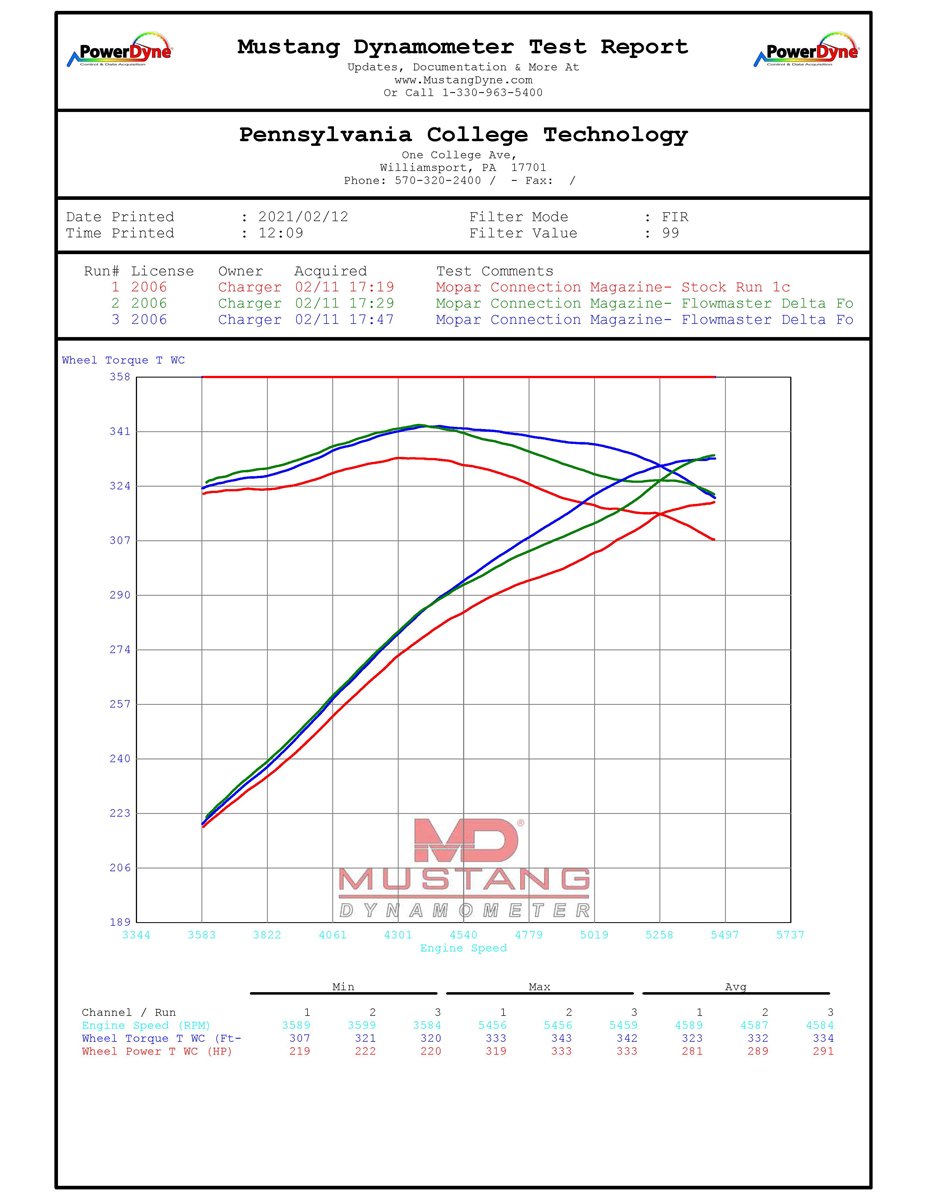
The dyno runs were performed under SAE J1349 standards. The ambient temperature ranged from 61.3 to 62.3°F, a barometer reading between 29.00 to 29.63-inches Hg, and humidity at 17%. The weather correction factor ranged between 1.013 to 1.015 for the tests. The red lines (run 1) are the baseline runs, the green lines (run 2) are the Flowmaster intake, and the blue lines (run 3) are the Flowmaster intake and the Diablo 93-octane CAI tune.
Pleased with the Delta Force intake, we took everything off and reinstalled the factory parts and the 93-octane tune. After re-running the baseline, the horsepower and torque were within 1% of the pre-baseline, which verified our test results. After the snow melts, it would be nice to take the Charger to a drag strip and verify our results in a real-world, on-track environment, but as far as the dyno testing, the CAI was a complete success.
If you are looking for a repeatable double-digit increase in torque and horsepower, check out the Flowmaster Delta Force Performance Intake or any of the Holley products for your Hemi.



